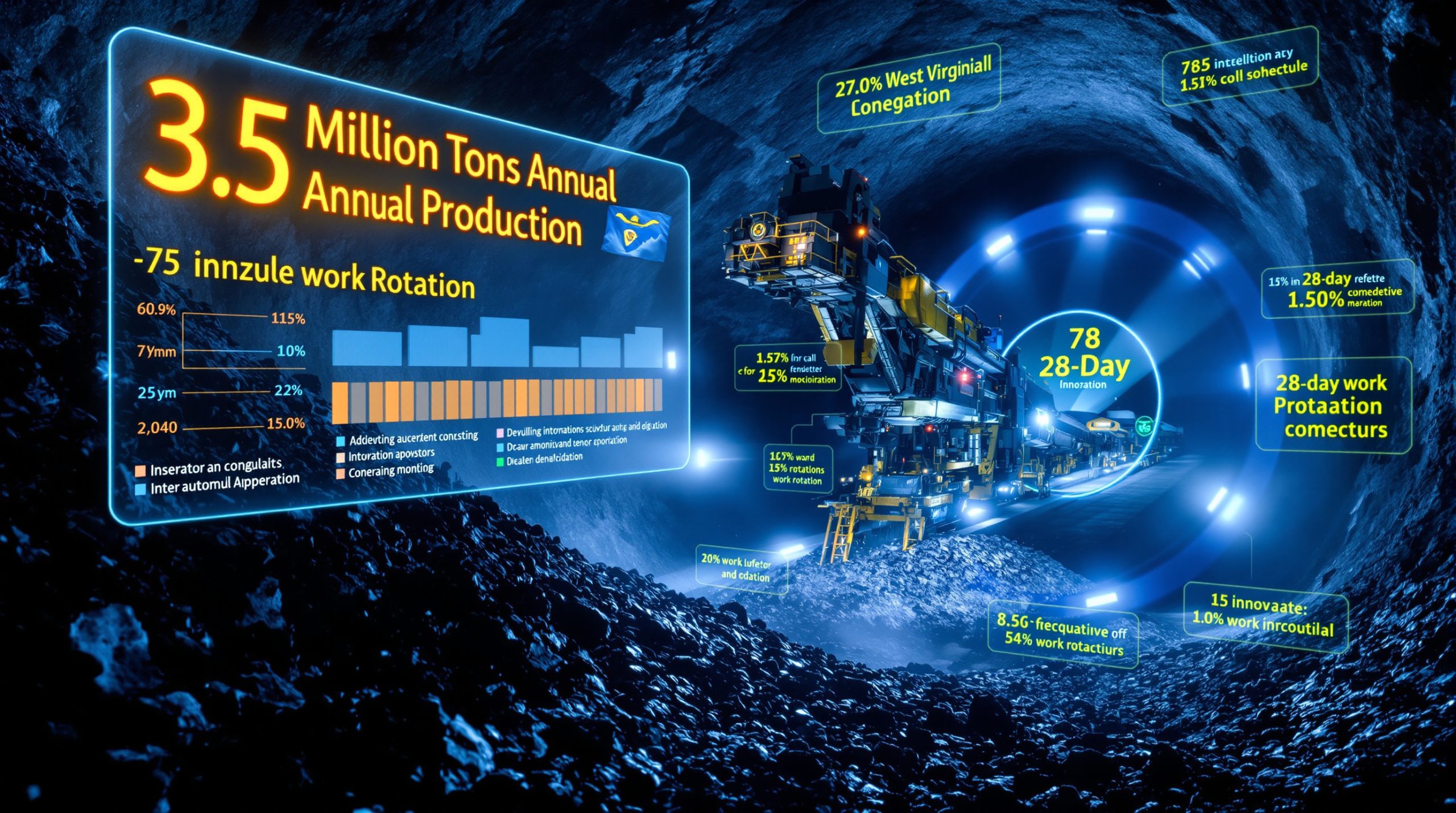Understanding Processing Fees in the Modern Copper Market
Treatment and refining charges represent the financial backbone of global copper smelting operations, serving as the primary revenue stream that enables processing facilities to transform raw concentrate into refined metal. These fees, commonly abbreviated as TC/RCs, function as payments from mining companies to smelters for converting semi-processed ore into market-ready copper products.
The economic foundation underlying sustainable copper processing fees extends far beyond simple cost recovery mechanisms. These charges must account for operational expenses, environmental compliance costs, capital equipment maintenance, and provide adequate margins to justify continued smelting operations. When fees fall below sustainable thresholds, the entire supply chain faces disruption as processing facilities become economically unviable.
Understanding Treatment and Refining Charges in Modern Markets
The copper processing industry operates through a complex fee structure where miners pay smelters to refine concentrate into finished metal. This arrangement differs significantly from other industrial sectors, where processors typically purchase raw materials outright. Instead, copper smelters earn revenue primarily through these processing charges rather than metal sales profits.
Current market dynamics have fundamentally altered this traditional model. In June 2025, unprecedented agreements emerged where Chinese smelters accepted zero-fee arrangements with Chilean miner Antofagasta, effectively eliminating their primary revenue source. This development signals a complete breakdown in conventional pricing mechanisms.
The Economic Foundation of Global Copper Supply Chains
Processing fees serve multiple critical functions within global copper markets:
- Revenue generation for smelting operations
- Risk compensation for handling volatile concentrate supplies
- Quality adjustment mechanisms for varying ore grades
- Transportation cost coverage for concentrate logistics
- Working capital provision for inventory management
When these fees approach zero or turn negative, smelters face impossible economic conditions. Negative TC/RCs, documented in multiple spot deals throughout 2025, force processing facilities to pay miners for the privilege of handling their concentrate, completely inverting normal business economics.
Environmental and Social Governance Impact on Fee Structures
Modern smelting operations face increasingly stringent environmental regulations that significantly impact operational costs. Carbon emissions standards, air quality requirements, and waste management protocols add substantial expenses that must be recovered through processing fees. When fees fall below levels needed to support these compliance costs, facilities risk closure or operational downgrading.
Furthermore, social governance considerations also influence fee sustainability. Communities hosting smelting operations expect economic benefits including employment, tax revenues, and local investment. Unsustainable processing economics threaten these social contracts, potentially leading to facility closures and economic disruption.
Market Forces Driving Processing Fee Collapse
The dramatic decline in copper price insights stems from fundamental supply-demand imbalances that have emerged across global markets. Tight concentrate supply combined with expanding smelting capacity in China has created perfect conditions for fee compression, forcing traditional pricing models to collapse.
Chinese smelting capacity expansion represents the single largest disruptive force affecting global processing economics. New facilities entering operation without corresponding increases in concentrate availability have intensified competition among smelters, driving fees toward zero and beyond into negative territory.
Historical Processing Fee Trends and Current Market Conditions
| Year | Average TC/RC Level | Market Conditions | Notable Events |
|---|---|---|---|
| 2020 | Stable baseline | Balanced supply/demand | COVID-19 supply disruptions |
| 2021 | Moderate decline | Recovery demand surge | Smelter maintenance delays |
| 2022 | Continued pressure | Capacity additions | Chinese expansion begins |
| 2023 | Significant compression | Supply tightness | Environmental shutdowns |
| 2024 | Near-zero levels | Extreme competition | Multiple closures announced |
| 2025 | Negative territory | Market breakdown | Zero-fee agreements emerge |
The progression toward unsustainable levels accelerated dramatically in 2025, with some spot market transactions requiring smelters to pay miners rather than receive processing fees. This reversal represents an unprecedented breakdown in traditional copper market mechanics.
China's Expanding Smelting Capacity Impact
Chinese copper smelting capacity additions have fundamentally altered global processing economics. New facilities constructed without corresponding increases in domestic concentrate production have created intense competition for available raw materials. This capacity overhang forces Chinese smelters to accept increasingly unfavourable terms to secure concentrate supplies.
Consequently, the competitive pressure from Chinese facilities affects global markets by establishing new pricing benchmarks that traditional smelters cannot match while maintaining profitability. International processing facilities find themselves unable to compete with operations willing to accept zero or negative fees.
Global Supply-Demand Imbalances Creating Market Stress
Concentrate availability has failed to keep pace with smelting capacity growth, creating structural imbalances that manifest in fee compression. Mining operations face their own challenges including:
- Declining ore grades at existing operations
- Permitting delays for new mining projects
- Infrastructure constraints limiting production expansion
- Environmental restrictions on new mine development
- Capital allocation preferences for existing operations
However, these mining sector constraints limit concentrate supply growth just as smelting capacity additions accelerate globally, intensifying competition for available raw materials.
International Response to Unsustainable Processing Economics
The deterioration of copper processing economics has prompted unprecedented international coordination, with Japan, Spain, and South Korea issuing warnings about current market conditions. This October 15, 2025 declaration represents the first coordinated governmental response to processing fee instability.
The three-country statement specifically warned that current conditions prompt "a reassessment of copper smelting operations worldwide, with several companies already indicating intentions to scale down or withdraw from copper concentrate smelting." This official acknowledgment validates industry concerns about processing economics sustainability.
Japan's Strategic Response to Market Volatility
Japan faces particular vulnerability due to its dependence on imported concentrate combined with significant domestic smelting capacity. JX Advanced Metals and Mitsubishi Materials, the country's major copper processors, have publicly announced plans to scale back operations as declining fees erode profit margins.
Naoki Kobayashi, deputy director of Japan's mineral resources department, emphasised that the three participating countries "all importers of copper concentrate with domestic smelting operations" coordinated their response during LME Week in London. This timing maximised industry attention and demonstrated the seriousness of governmental concerns.
Moreover, Japanese officials recognise that current market conditions prevent sustainable development of processing operations alongside mining activities. The country's industrial competitiveness depends on maintaining viable smelting capacity, making fee sustainability a national economic priority.
Spain's Industrial Competitiveness Concerns
Spain's participation in the joint statement reflects concerns about maintaining European copper processing capabilities. The country's smelting operations face intense pressure from Chinese competitors willing to accept unsustainable fee levels, threatening the viability of European facilities.
Spanish industrial policy emphasises maintaining strategic metal processing capabilities within Europe to reduce dependence on external suppliers. However, current market conditions make this objective increasingly difficult to achieve without coordinated international intervention.
South Korea's Supply Chain Security Initiatives
South Korea's involvement highlights Asia-Pacific concerns about processing capacity concentration. The country recognises that excessive dependence on specific nations for critical metal processing creates supply chain vulnerabilities that could affect industrial competitiveness.
Korean officials support the joint statement's position that "growing dependence on specific countries is undesirable for both resource-producing and smelting countries." This perspective emphasises the need for geographically diversified processing capabilities.
Long-Term Consequences of Processing Fee Breakdown
The collapse of sustainable copper processing fees threatens fundamental changes to global copper supply chains. Smelter closures and capacity reductions represent the most immediate risks, with several major facilities already announcing operational scaling back.
Furthermore, industry restructuring appears inevitable as processing facilities unable to operate profitably at current fee levels face closure or consolidation. This consolidation could concentrate processing power in fewer hands, potentially creating supply chain vulnerabilities and reducing competition.
Smelter Closures and Capacity Reduction Risks
Multiple major smelting operations have indicated intentions to reduce processing volumes or exit copper concentrate smelting entirely. Japanese facilities JX Advanced Metals and Mitsubishi Materials exemplify this trend, announcing plans to scale back operations as margins disappear.
Critical Industry Warning: The joint ministerial statement from Japan, Spain, and South Korea explicitly warned that deteriorating TC/RCs are "prompting a reassessment of copper smelting operations worldwide" with companies indicating intentions to withdraw from copper concentrate processing.
The potential loss of processing capacity could create bottlenecks in copper supply chains, particularly if closures occur faster than new capacity additions in regions with sustainable cost structures. This imbalance could ironically restore processing fees but at the cost of reduced global processing capability.
Geographic Concentration of Processing Power
Current market dynamics favour processing facilities willing to accept minimal or negative fees, concentrating operational capacity in specific regions. This geographic concentration creates strategic vulnerabilities for both mining companies and metal consumers who depend on diverse processing options.
Reduced processing competition could eventually enable surviving facilities to demand higher fees, but only after significant capacity rationalisation occurs. This market correction process may involve substantial disruption to global copper supply chains.
Impact on Mining Investment and Exploration
Processing fee instability affects mining sector investment decisions by creating uncertainty about future concentrate sales terms. Mining companies require predictable processing access and costs to justify new project investments, but current market volatility complicates financial planning.
The relationship between mining and processing sectors becomes increasingly strained when smelters operate at unsustainable economic levels. Long-term mining development depends on stable processing partnerships that current market conditions undermine.
Technological Solutions for Processing Sustainability
Advanced processing technologies offer potential pathways toward sustainable copper processing economics through improved efficiency and reduced operational costs. Automation and digitalisation initiatives across major smelting operations demonstrate industry efforts to maintain competitiveness despite fee pressure.
Modern smelting facilities increasingly incorporate sophisticated control systems, predictive maintenance technologies, and optimised process parameters to maximise throughput while minimising costs. These technological investments require substantial capital but can significantly improve processing economics over time.
Technology-Driven Efficiency Improvements
Processing efficiency gains through technological advancement include:
- Advanced process control systems optimising smelting parameters
- Predictive maintenance reducing unplanned downtime
- Energy recovery systems capturing waste heat
- Automated material handling lowering labour costs
- Real-time monitoring enabling rapid process adjustments
| Technology Category | Efficiency Gain | Implementation Cost | Payback Period |
|---|---|---|---|
| Process Automation | 8-12% | High | 3-5 years |
| Energy Recovery | 15-20% | Medium | 2-3 years |
| Predictive Maintenance | 5-8% | Low | 1-2 years |
| Advanced Controls | 10-15% | Medium | 2-4 years |
These technological improvements can partially offset processing fee declines by reducing operational costs, though they cannot completely compensate for negative fee structures.
Renewable Energy Integration in Smelting Operations
Energy costs represent significant portions of smelting operational expenses, making renewable energy integration attractive for improving processing economics. Solar and wind power installations at processing facilities can substantially reduce electricity costs while meeting environmental compliance requirements.
For instance, several major smelting operations have initiated renewable energy projects:
- Solar photovoltaic installations reducing grid electricity dependence
- Wind power agreements providing predictable energy costs
- Energy storage systems enabling load management optimisation
- Grid integration technologies maximising renewable energy utilisation
Carbon footprint reduction through renewable energy adoption also supports environmental compliance objectives while potentially reducing regulatory costs associated with emissions standards.
Circular Economy Approaches to Fee Sustainability
Copper recycling represents an important alternative revenue stream for processing facilities facing concentrate fee pressure. Secondary copper processing from recycled materials often provides more favourable economics than primary concentrate processing.
Recycling-focused processing strategies include:
- Electronic waste processing for copper recovery
- Industrial scrap reprocessing and purification
- Construction material recycling initiatives
- Wire and cable reclamation operations
- Automotive component copper extraction
These circular economy approaches diversify revenue sources beyond traditional concentrate processing, potentially improving overall facility economics even when TC/RCs remain challenging.
Alternative Pricing Mechanisms for Market Stability
Traditional benchmark pricing systems have proven inadequate for current market conditions, prompting exploration of alternative fee structures that could provide greater stability for both miners and smelters. Risk-sharing arrangements represent one potential approach to address current market failures.
Long-term contract frameworks could replace volatile spot market pricing with more predictable fee structures that support sustainable processing operations. These arrangements require careful balance between miner and smelter interests while maintaining market flexibility.
Moving Beyond Traditional Benchmark Pricing
Current TC/RC pricing mechanisms rely heavily on annual benchmark negotiations that may not adequately reflect real-time market conditions or operational realities. Alternative approaches being explored include:
- Cost-plus pricing models ensuring smelter profitability
- Revenue sharing arrangements based on metal price performance
- Processing partnerships with integrated ownership structures
- Regional pricing mechanisms reflecting local market conditions
- Multi-year contracts providing greater planning certainty
In addition, these alternative mechanisms aim to provide more stable economic foundations for processing operations while maintaining competitive market dynamics.
Regional Processing Hubs and Localised Fee Structures
Geographic specialisation could enable processing hubs to develop sustainable fee structures based on regional competitive advantages. Transportation costs, energy prices, environmental regulations, and labour availability vary significantly across regions, suggesting opportunities for differentiated pricing approaches.
Regional processing strategies might include:
- Proximity premiums for processing near mining operations
- Quality specialisation for specific concentrate types
- Environmental compliance advantages in certain jurisdictions
- Energy cost differentials supporting competitive positioning
- Infrastructure integration reducing logistics expenses
Long-Term Contract Frameworks for Market Stability
Extended contract periods could provide the stability necessary for sustainable processing economics while reducing market volatility. Multi-year agreements enable both miners and smelters to plan investments and operations with greater certainty.
Key elements of stable contracting frameworks include:
- Minimum fee guarantees ensuring smelter viability
- Volume commitments providing operational planning certainty
- Quality specifications establishing clear processing parameters
- Price adjustment mechanisms reflecting cost changes
- Force majeure provisions addressing operational disruptions
Global Supply Security and Processing Economics
Strategic mineral dependencies have emerged as critical national security concerns as processing capacity becomes concentrated in specific regions. The joint statement from Japan, Spain, and South Korea explicitly warned that "growing dependence on specific countries is undesirable for both resource-producing and smelting countries."
Processing fee sustainability directly affects global supply security by determining which facilities remain economically viable. Unsustainable economics could force closures in strategically important regions while consolidating capacity in areas with lower cost structures but potentially higher geopolitical risks.
Strategic Mineral Dependencies and National Security
National governments increasingly recognise copper processing as strategically important industrial capability requiring protection from market disruptions. Import dependence combined with domestic smelting operations creates particular vulnerability to processing fee volatility.
Strategic considerations include:
- Processing capacity retention within national borders
- Supply chain diversification across multiple countries
- Emergency stockpiling of processed copper materials
- Technology transfer agreements maintaining processing capabilities
- Investment incentives supporting domestic processing operations
Therefore, the three-country ministerial statement demonstrates governmental recognition that market forces alone may not ensure adequate processing capacity retention in strategically important regions.
Critical Infrastructure Investment Requirements
Maintaining viable copper processing capabilities requires substantial ongoing capital investment in equipment modernisation, environmental compliance, and operational efficiency improvements. Unsustainable processing fees undermine the economic foundation necessary to support these investments.
Infrastructure requirements include:
- Smelting equipment modernisation and maintenance
- Environmental control systems meeting regulatory standards
- Transportation infrastructure supporting concentrate logistics
- Energy supply systems ensuring reliable power availability
- Technology upgrades maintaining competitive processing capabilities
Without adequate processing fee levels, facilities cannot generate sufficient cash flow to fund necessary infrastructure investments, leading to progressive deterioration and eventual closure.
Trade Policy Implications for Processing Fee Regulation
International trade policies could potentially address processing fee sustainability through various mechanisms, though implementation remains complex due to global supply chain integration. Coordinated policy responses like the Japan-Spain-South Korea initiative may represent early steps toward broader international cooperation.
However, the tariff impact on copper markets demonstrates how trade policy changes can affect processing economics. Potential policy approaches include:
- Minimum processing fee standards enforced through trade agreements
- Anti-dumping measures addressing below-cost processing services
- Strategic industry protection for domestic processing capabilities
- Investment incentives supporting processing facility modernisation
- International coordination on processing capacity planning
Environmental Compliance and Processing Sustainability
Environmental regulations increasingly impact copper processing economics through compliance costs that must be recovered through processing fees. Carbon pricing mechanisms and emissions standards add substantial operational expenses that unsustainable fee levels cannot support.
Modern smelting operations require sophisticated environmental control systems including air quality management, waste treatment facilities, and emissions monitoring equipment. These systems represent significant capital and operational expenses that economic processing fees must accommodate.
Carbon Pricing Integration in Processing Costs
Carbon emissions from copper smelting operations face increasing regulatory scrutiny and potential pricing mechanisms that could substantially impact processing economics. Carbon tax systems and emissions trading programs add direct costs to smelting operations.
Environmental cost considerations include:
- Direct carbon taxes on smelting emissions
- Emissions trading permit costs for regulatory compliance
- Renewable energy investments reducing carbon footprints
- Efficiency improvements minimising emissions per unit processed
- Carbon capture technologies for emissions reduction
These environmental compliance costs require adequate processing fee levels to ensure sustainable operations while meeting regulatory requirements.
Environmental Standards Driving Operational Expenses
Stringent environmental standards impose substantial operational costs on copper processing facilities through required control systems, monitoring equipment, and compliance procedures. Air quality regulations, water treatment requirements, and waste management standards all contribute to processing cost increases.
Major environmental compliance categories include:
- Air emissions control and monitoring systems
- Water treatment facilities and discharge management
- Solid waste handling and disposal procedures
- Noise control measures for community protection
- Emergency response systems for environmental incidents
ESG Requirements Reshaping Industry Economics
Environmental, Social, and Governance (ESG) requirements increasingly influence copper processing operations through investor expectations, regulatory standards, and market access requirements. These ESG considerations add operational complexity and costs that processing fees must support.
ESG compliance areas affecting processing economics include:
- Environmental performance monitoring and reporting
- Social impact assessment and community engagement
- Governance standards for operational transparency
- Worker safety programmes and facility improvements
- Stakeholder engagement processes and communications
Frequently Asked Questions About Processing Fee Challenges
Why Are Some Smelters Paying Miners Instead of Charging Fees?
The fundamental reversal of traditional processing economics stems from concentrate supply constraints combined with excess smelting capacity in key markets. Chinese smelters, facing intense competition for available concentrate, have accepted zero-fee arrangements and even negative pricing structures to secure raw material supplies.
This market inversion occurs when:
- Smelting capacity exceeds available concentrate supplies
- Fixed operational costs make idle capacity extremely expensive
- Market share considerations outweigh short-term profitability
- Strategic positioning for future market conditions takes priority
- Integration benefits with other operations justify processing losses
In June 2025, Chinese smelters' willingness to process Antofagasta's concentrate at zero fees demonstrated how far traditional pricing mechanisms have broken down under current market pressures.
How Do Processing Fees Compare Across Different Metals?
Copper processing fees operate differently compared to other base metals due to unique market structures, processing complexity, and supply chain characteristics. Zinc, lead, and nickel processing typically involves different fee structures reflecting their distinct operational requirements.
Metal processing fee variations include:
- Copper: TC/RC structure with separate treatment and refining charges
- Zinc: Treatment charges based on concentrate quality and market conditions
- Lead: Processing fees influenced by silver content and environmental costs
- Nickel: Complex fee structures varying by processing route and final product
- Aluminium: Completely different economics based on bauxite and energy costs
Each metal's processing economics reflect specific technical requirements, environmental challenges, and market dynamics unique to that commodity.
What Happens When Processing Becomes Unprofitable?
Unprofitable processing operations face several potential outcomes depending on operational flexibility, strategic importance, and corporate financial strength. Facility closures represent the ultimate consequence when processing economics cannot be restored to sustainable levels.
Responses to unprofitable processing include:
- Operational scaling back to reduce fixed cost impacts
- Maintenance deferrals extending equipment life cycles
- Workforce reductions minimising labour expenses
- Contract renegotiations seeking improved terms
- Facility closures when losses become unsustainable
The Japanese smelters JX Advanced Metals and Mitsubishi Materials exemplify industry responses, announcing operational scaling back as processing margins disappear under current fee structures.
Building Resilient Processing Economics for the Future
The path toward sustainable copper processing fees requires coordinated efforts among miners, smelters, and governments to establish market mechanisms that support long-term industry viability. International collaboration like the Japan-Spain-South Korea initiative demonstrates recognition that market failures require collective solutions.
Industry stakeholders must balance competitive market dynamics with the need for processing facility economic sustainability. This balance requires innovative approaches that preserve market efficiency while ensuring adequate processing capacity remains available globally. Moreover, the us copper production overview indicates how regional capacity distribution affects global processing economics.
Industry Collaboration Initiatives for Sustainable Pricing
Collaborative approaches to processing fee sustainability could include:
- Industry associations developing best practice pricing guidelines
- Voluntary agreements establishing minimum fee standards
- Joint ventures between miners and smelters sharing risks and rewards
- Technology sharing initiatives reducing processing costs
- Research cooperation advancing processing efficiency
The commitment from Japan, Spain, and South Korea to "continue engaging with relevant countries and stakeholders to establish a resilient and sustainable copper supply chain" suggests ongoing international cooperation efforts.
Technology Roadmap for Cost-Effective Processing
Future processing sustainability depends heavily on technological advancement that reduces operational costs while maintaining environmental compliance and product quality. Automation, renewable energy integration, and process optimisation represent key technology focus areas.
Strategic technology development priorities include:
- Advanced process control systems maximising efficiency
- Energy integration technologies reducing power consumption
- Automated operations minimising labour requirements
- Environmental technologies reducing compliance costs
- Digitalisation platforms optimising facility management
These technological improvements could gradually restore processing economics even if market fee structures remain challenging in the near term. Additionally, copper & uranium investments show how diversified metal processing can support facility economics.
Policy Recommendations for Market Stability
Governmental and international policy interventions could support processing fee sustainability through various mechanisms that address market failures while preserving competitive dynamics. Coordinated international responses may prove necessary given the global nature of copper supply chains.
Furthermore, the global copper supply forecast suggests that policy coordination must account for evolving supply patterns. Policy approaches for consideration include:
- Minimum processing standards preventing below-cost pricing
- Strategic industry support for domestic processing capabilities
- International cooperation agreements on capacity planning
- Investment incentives encouraging processing facility modernisation
- Trade policy coordination addressing unfair competitive practices
The joint ministerial statement represents an important first step toward international policy coordination, with participating countries committing to continued stakeholder engagement for supply chain resilience.
Analysis indicates that smelting challenges across the industry require comprehensive solutions addressing both market structure and operational efficiency.
Disclaimer: This analysis is based on market conditions and industry statements as of October 2025. Copper processing economics remain highly volatile and subject to rapid change based on supply-demand dynamics, technological developments, and policy interventions. Investors and industry participants should conduct independent analysis before making strategic or investment decisions related to copper processing operations.
Ready to Capitalise on the Next Major Copper Discovery?
Discovery Alert's proprietary Discovery IQ model delivers real-time alerts on significant ASX mineral discoveries, instantly empowering subscribers to identify actionable opportunities ahead of the broader market. Understand why historic discoveries can generate substantial returns by exploring examples of exceptional market outcomes, then begin your 30-day free trial today to position yourself ahead of volatile processing markets.




